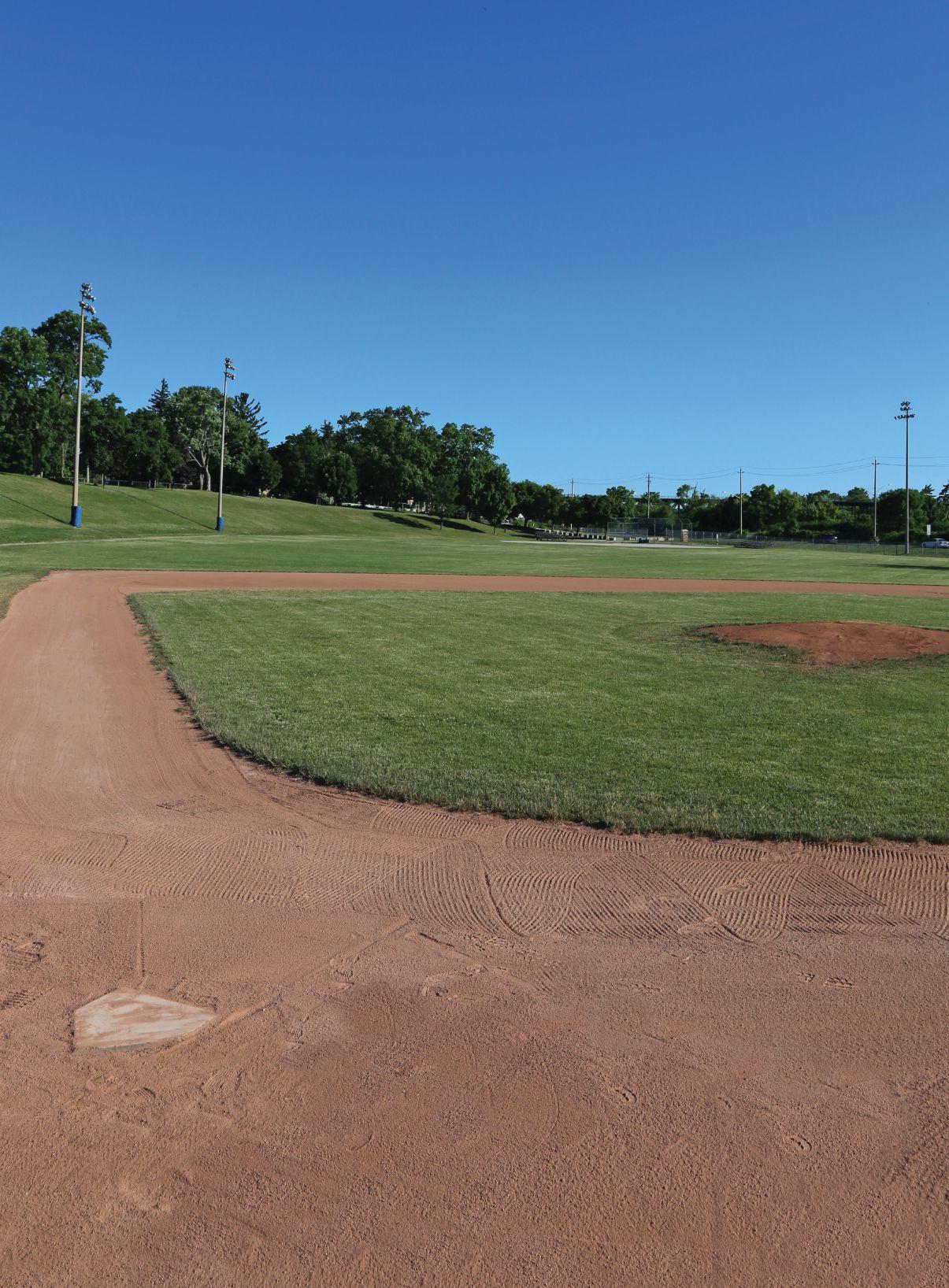

PROFESSIONAL BASEBALL FIELD MANAGEMENT
Reliability that counts
FS 94 R BRUSHCUTTER
Dependable performance meets variable speed control.
The STIHL FS 94 R brushcutter delivers outstanding power-to-weight ratio, weighing just over 10 pounds – ideal for use as your primary landscape tool. Its state-of-the-art control handle features an ECOSPEED throttle set wheel, providing you the ability to control the required speed for each task such as low throttle for edging around delicate plants. Hit the throttle and the lever returns to normal operating position. This high performance and fuel-efficient engine tackles all of those demanding jobs. Combined with an antivibration system to help reduce operator fatigue and provide a comfortable operation all day long. This is a durable and superior brushcutter designed for the professional landscaper.


SPECIFICATIONS
① Weight without fuel, cutting attachment or deflector.
PRO-FLEET COMMERCIAL LANDSCAPE PROGRAM
STIHL’s Pro-Fleet Commercial Landscape Program is designed to provide commercial landscapers a volume discount on major purchases of 5 or more landscaping power tools. Visit your STIHL Dealer today to find out more and take advantage of the savings!
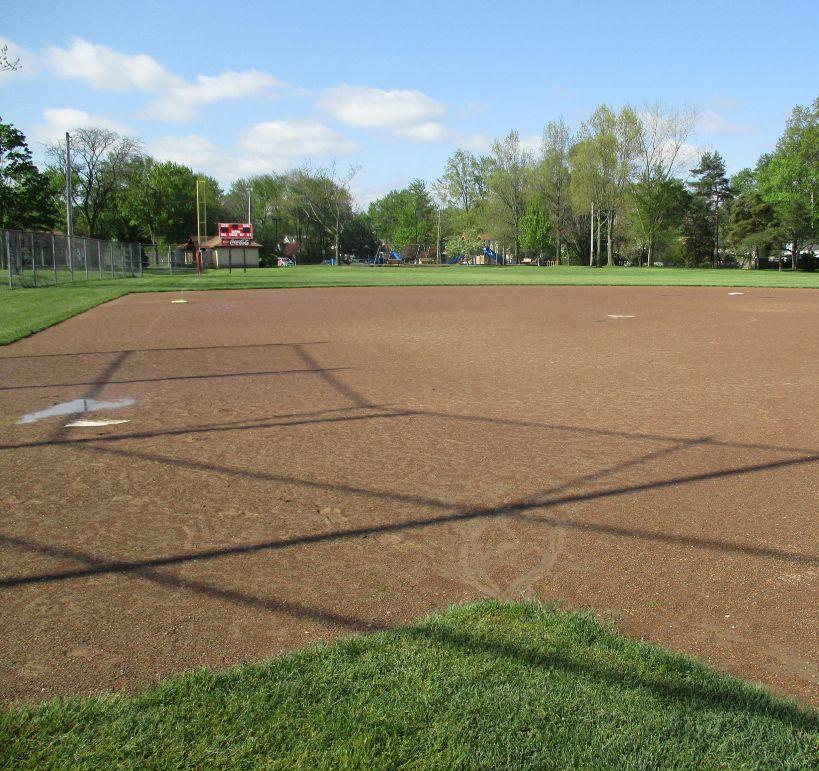
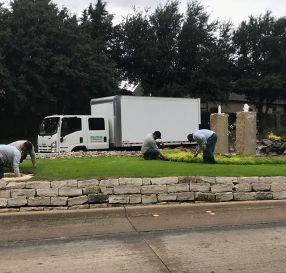
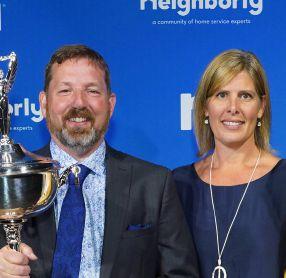
MIKE JIGGENS

By Mike Jiggens
Growing the game of baseball in Canada
One doesn’t earn the honour of being named
Northwest Baseball League’s sports field manager of the year by fluke. It takes a certain amount of effort to win such an honour, and then to repeat twice more in as many years takes real skill and dedication.
Ross Baron, head groundskeeper at Scotiabank Field at Nat Bailey Stadium in Vancouver, has earned himself the league honour the past three seasons. Interestingly, he has been working for the Single A Vancouver Canadians for only three seasons, capturing the top honour in each year.
The short season affiliate of the Toronto Blue Jays didn’t want to risk losing its association with the Major League Baseball club, but realized that unless field conditions didn’t significantly improve, the relationship was in jeopardy of fizzling. Baron was hired with the confidence he could restore the field to its past glory, and he didn’t disappoint.
He had a plan and began executing a complete makeover of the field in time for the start of the 2017 season. The metamorphosis was like night and day.
The accolades Baron has earned for himself led to him being asked to speak in February at the Ontario Turfgrass Symposium at the University of Guelph. He made two separate presentations at the
event – the first chronicled Nat Bailey’s transition from a field in dire condition to one both playable and presentable, while the second focused specifically on infield conditioning.
It should be noted that Baron was among Turf & Rec ’s class of the 2019 Top 10 Under 40 honourees. His inclusion on the list shouldn’t come as any surprise.
Although working for a professional baseball organization may sound glamorous, Baron works with a fairly limited budget yet has been able to stretch a dollar to his advantage to achieve what needs to be done.
Baron was hired with the confidence he could restore the field to its past glory, and he didn’t disappoint
The hours can be long, especially on game days, but his commitment toward perfection has been paying off.
In spite of the comparatively shorter season common among Single A short season baseball, professional baseball is a popular draw in Vancouver. The Canadians sell out their 38 home dates almost 99 per cent of the time. In fact, they put more spectators in the seats than all other professional baseball teams from the Double A ranks on down.
Perhaps this is a reason that Vancouver has been short-
listed among North American cities as a potential emergency “home” field for Major League Baseball’s Arizona Diamondbacks. The National League ball club has listed Vancouver as one of six cities to possibly fill in for the Diamondbacks if a structural emergency is declared at Chase Field.
The quality of Baron’s field conditions at Nat Bailey Stadium would likely serve the Diamondbacks well, but it’s the under-the-dome artificial field at BC Place Stadium that would become Arizona’s temporary home. The team would have to share the field with the B.C. Lions of the Canadian Football League, and how that will affect the artificial surface hasn’t been said.
Of course it could be one of the other shortlisted cities chosen in the end to serve as Arizona’s temporary home, if a short-term home is even necessary.
This may not be the best news for the Arizona Diamondbacks – possibly having to relocate for the short term – but it could potentially trigger renewed growth for baseball in Canada. There has also been talk of the Tampa Bay Rays sharing their home dates with the City of Montreal.
If the Rays are destined to play as many as half their home games in Montreal, it will be interesting to see how many seats are filled.
Major league baseball in Vancouver and Montreal – albeit in small dosages – could have a significant impact on the game’s growth in Canada. This could lead to a demand for more diamonds.
www.turfandrec.com
Editor Mike Jiggens mjiggens@annexbusinessmedia.com
National Advertising Manager Rebecca Lewis 519-400-0322 rlewis@annexbusinessmedia.com
Nashelle Barsky 905-431-8892 nbarsky@annexbusinessmedia.com
Account Coordinator Mary Burnie 1-888-599-2228 ext 234 mburnie@annexbusinessmedia.com
Circulation Manager Anita Madden 416-510-5183 amadden@annexbusinessmedia.com
Group Publisher Todd Humber thumber@annexbusinessmedia.com
COO Scott Jamieson sjamieson@annexbusinessmedia.com
Printed in Canada ISSN 1186-0170
PUBLICATION MAIL AGREEMENT #40065710
SUBSCRIPTION RATES
Published 7 times a year – Jan/Feb, March, Apr/May, June, Aug/Sept, October, Nov/Dec Canada – 1 year $35.00; 2 year $45.00 3 years $55.50 (plus applicable taxes HST 86717 2652 RT0001
CIRCULATION
email: blao@annexbusinesmedia.com
Tel: 416.442-5600 ext 3552 Fax: 416.510.6875 (main) 416.442-2191 Mail: 111 Gordon Baker Rd., Suite 400, Toronto, ON M2H 3R1
Occasionally, Turf and Recreation will mail information on behalf of industry related groups whose products and services we believe may be of interest to you. If you prefer not to receive this information, please contact our circulation department in any of the four ways listed above.
Annex Privacy Office privacy@annexbusinessmedia.com
Tel: 800.668.2374
No part of the editorial content of this publication may be reprinted without the publisher’s written permission © 2020 Annex Publishing & Printing Inc. All rights reserved. Opinions expressed in this magazine are not necessarily those of the editor or the publisher. No liability is assumed for errors or omissions. All advertising is subject to the publisher’s approval. Such approval does not imply any endorsement of the products or services advertised. Publisher reserves the right to refuse advertising that does not meet the standards of the publication.

HUSQVARNA AUTOMOWER® 550
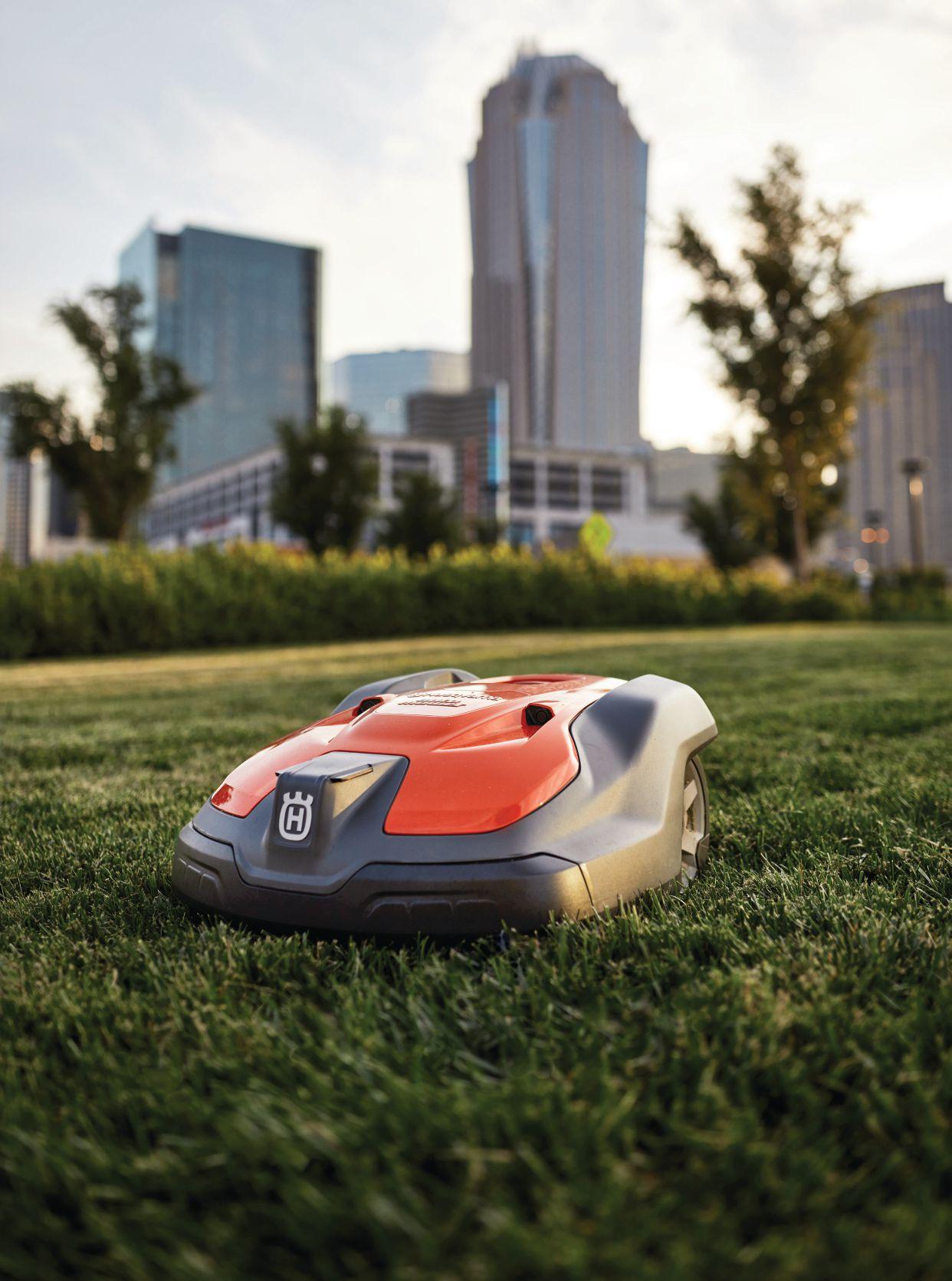
MAKE A VALUABLE ADDITION TO YOUR CUTTING CREW.
The new 500-series robotic mowers have been specially developed for professional use. High quality brushless motors, stainless bearings and rubber sealings ensure long-lasting functionality in the tough outdoors. Their rubber bumper increases durability, while a more robust user interface reduces the risk of tampering. Additionally, they come with a lifetime subscription to Husqvarna Fleet Services™ and advanced GPS tracking for total control and easy monitoring from your computer, smartphone or tablet. HUSQVARNA.COM
Connect with HusqvarnaCA
Vancouver on short list as home field for MLB’s Diamondbacks
BC Place Stadium in Vancouver is being considered as a possible home field for Major League Baseball’s Arizona Diamondbacks in the event of a structural emergency at Chase Field. The Vancouver stadium, which is home to the B.C. Lions of the Canadian Football League and Major League Soccer’s Vancouver Whitecaps, is on the list of six potential temporary homes for the Diamondbacks.
Group hopes council will reverse decision to close golf course
Although city council voted in December to close Brantford’s Arrowdale Golf Course, a local group isn’t giving up its fight to keep the nine-hole course open. The group has been gathering signatures for a petition it hopes will lead to council reversing its decision.
Council voted 8-3 in December to close the golf course, sell the property and use the proceeds to create affordable housing.
Toronto looks to shut down soccer field amidst controversy
The City of Toronto is proposing the closure of a soccer field at Turnberry North Park after fielding several complaints of noise and drug activity on the property. The city wants to convert the area into a multi-generational park.
Artificial turf was installed on the field in 2014 following complaints of grass and dirt being kicked about. Other complaints include soccer balls being kicked off the field and smashing into adjacent residential windows, on-field sexual acts and people scaling the locked fence.

Landscaping and green spaces leave lasting health benefits
As you get outside this spring, have you ever considered how our green spaces contribute to our health? Studies show that green space and landscaping contribute to health, happiness, and intellect. It’s natural to long for spring when it’s cold outside. But did you know, there’s a good reason why you may pine for green? Living landscapes are an important part of the outdoor lifestyle that we enjoy, but the benefits go beyond the barbecue and backyard baseball. Green spaces are necessary for your health.
“The advantages of grass and landscaping surpass the usual physical benefits that result from outdoor activity,” Kris Kiser, president and CEO, Outdoor Power Equipment Institute (OPEI), said. “Numerous studies have found that people who spend more time outside or are exposed to living landscapes are happier, healthier and smarter. As you get ready to get outside this spring
with your lawn mower and other outdoor power equipment, it’s great to know being outside is good for you.”
Researchers have studied the impact of nature on human well-being for years, but recent studies have found a more direct correlation between human health, particularly related to stress, and the importance of people’s access to nature and managed landscapes. Getting dirty is actually good for you. Soil is the new Prozac, according to Dr. Christopher Lowry, a neuroscientist at the University of Bristol in England. Mycobacterium vaccae in soil mirrors the effect on neurons that Prozac provides. The bacterium stimulates serotonin production, which explains why people who spend time gardening, doing yard work, and have direct contact with soil feel more relaxed and happier. Full story at turfandrec.com/ five-health-benefits-of-green-spaces/
Number of cities shortlisted to be Arizona’s temporary home 8-3
council’s vote to close Arrowdale Golf Course

Metamorphosis of field helped save MLB alliance
Vancouver’s minor league field had safety, playability issues.
By Mike Jiggens
For the past three seasons, Ross Baron has been named sports turf manager of the year for the Northwest Baseball League. Last season, he earned the additional honour of Minor League Baseball’s sports field manager of the year in the class A, short season/rookie category.
Interestingly, Baron began his current career as head groundskeeper for the Vancouver Canadians the same year as his first Northwest League honour. Speaking in February at the Ontario Turfgrass Symposium at the University of Guelph, he said that before taking on his position at Scotiabank Field at Nat Bailey Stadium, he wanted to know of the status between the Single A level Canadians and its parent team, the Toronto Blue Jays of Major League Baseball’s American League. He understood the Blue Jays weren’t happy with the field conditions at Scotiabank Field.
“The conditions had got to a point where it became a safety issue and a playability
issue,” he said. “We were at risk of losing our affiliation. It was something that definitely had to improve.”
The organization didn’t want to risk losing the Toronto-Vancouver connection and provided Baron with the tools he needed to improve the field and return it into a top-level ballpark.
“The field was in terrible shape which meant that it could only improve. There was really nothing I could do to make it any worse. Management needed drastic change which ensured their support.”
Baron has an operating budget of about $100,000, which doesn’t include labour. He has three other seasonal grounds staff with him from April to October, working a short season of 38 home games. The season itself spans the period from June to mid-September.
Scotiabank Field at Nat Bailey Stadium is an older ballpark, constructed at its current site in 1951. With an average attendance of 6,210 people, the park is a higher
drawing venue than all other professional baseball clubs from Double A down.
“We sell out about 98.7 per cent of our games throughout the season.”
There are seven classifications of minor league baseball, and Single A short season ranks about third from the bottom.
Being an older stadium, inventory for equipment is small, Baron said.
“When they built it, it wasn’t designed to hold a lot of equipment.”
Consequently, such tasks as aeration, verticutting and other cultural practices are contracted out because the ball club doesn’t have the storage capacity to own much of the necessary equipment.
In his first year on the job in 2017, following three years working for the City of Kelowna, he said the turf condition at the Vancouver ballpark was “horrendous.” Grass cover was thin, and a lack of cultural practices had been performed the previous five years.
“It wasn’t always like this. It was nice in
Not as much attention needs to be given to a baseball park’s outfield as the infield requires. Only three players at a time roam the area, contributing to comparatively less compaction and wear.
the ‘70s, ‘80s and even the ‘90s. But the turf began to be neglected. It was in such a drastic condition that I felt something needed to be done.”
Contaminated infield
The skinned infield was contaminated upon his arrival, with weeds and grass growing from within the material. Much of the problem was attributed to Canada geese, which ate poa and weed seed at nearby Queen Elizabeth Park and then defecated on the infield. The conditions were ideal for germination because the clay remained wet throughout the winter months.
As a former baseball player himself, Baron took a hard look at the field conditions from both an athlete’s perspective as well as that of a sports field manager. One of the first things he wanted to do was address turf health, maintenance and cultur-
al practices on the field with plans to introduce aggressive aeration and verticutting programs.
Lips and transition areas needed attention as well.
“They need to be level to keep the field safe, to eliminate bad hops and things, and that’s something we needed to look at as well.”
Baron said he wasn’t at all pleased with the lack of colour contrast on the field when he was hired.
“By picking good infield material and warning track material and having good colour and fertilizing your grass, you can create a field that pops a lot more.”
The warning track he inherited had been constructed with a road-based material that was “grey, extremely hard and ugly.” Additionally, some areas of the track were eight feet wide while others were 16 feet.
“The first thing I wanted to do was standardize that at 16 feet.”
Improving the ballpark’s esthetics was at the top of Baron’s to-do list.
“The first thing they see is the esthetics. They don’t see playability, so if you want to get support from your management or staff, you need to make the people who aren’t educated on the small technical things to give you support by seeing that you know how you’re doing your job, and the easiest way to achieve that is by focusing on the esthetics first.”
Baron said his next priority was to address the infield and foul territories, both of which were in “dire” condition. His strategy was to strip both areas and lay down new Kentucky bluegrass sod.
“Because I couldn’t strip the entire outfield, I decided to instill an aggressive overseeding program of 60 per cent Kentucky
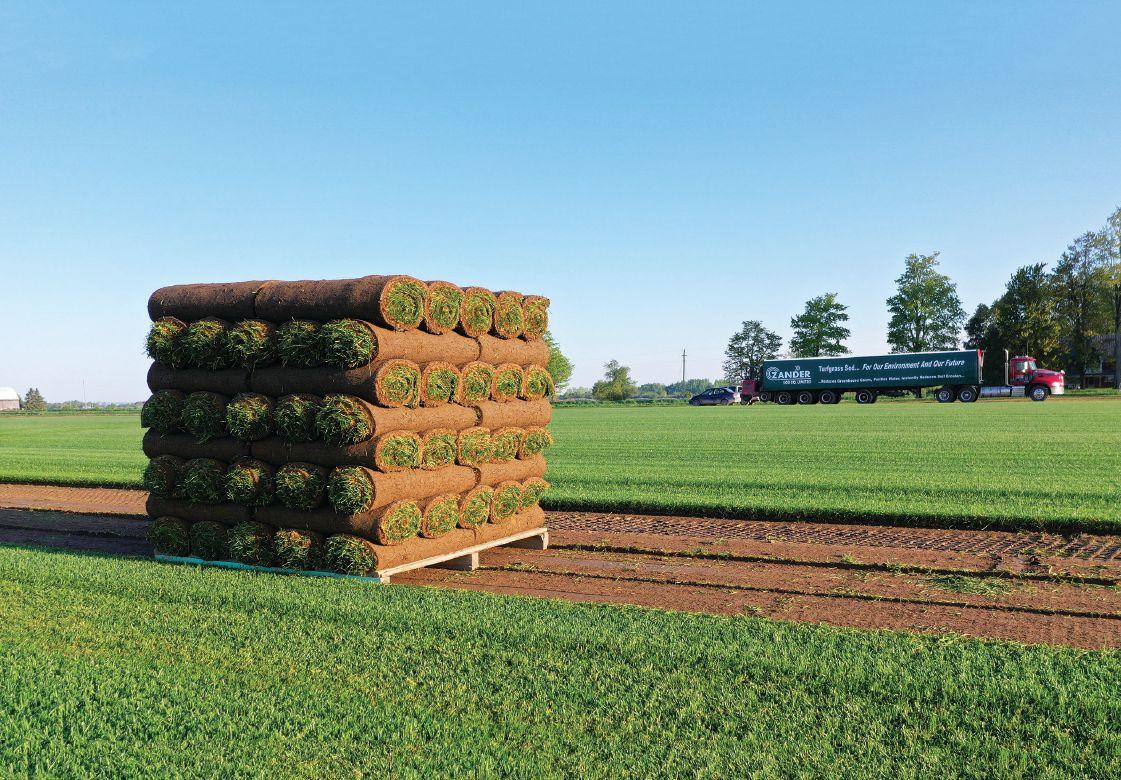

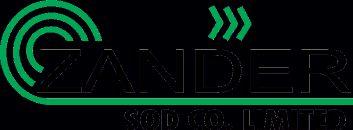
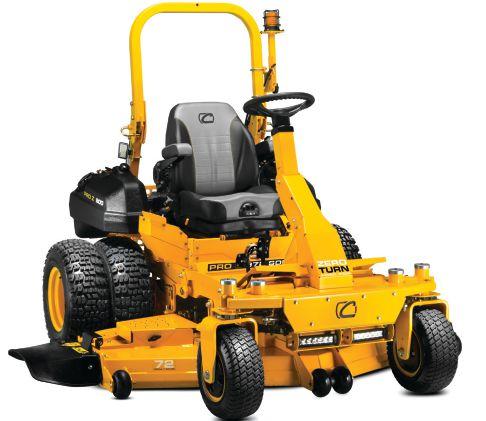
UNRELENTING TOUGHNESS
Experience hillside domination with superior cut quality at high speeds and exclusive steering operations. The Pro Z™ Series is built with industry-leading steel thickness, maintenance-free spindle assemblies and unmatched commercial warranties. The new Pro Z 972 SDL provides maximum comfort with its self-levelling air-ride seat that lets you operate up to 15 degrees of self-leveling side-to side.

to learn more about the new Pro Z 972 SDL and to view the complete line-up of unmatchable power, strength and comfort.
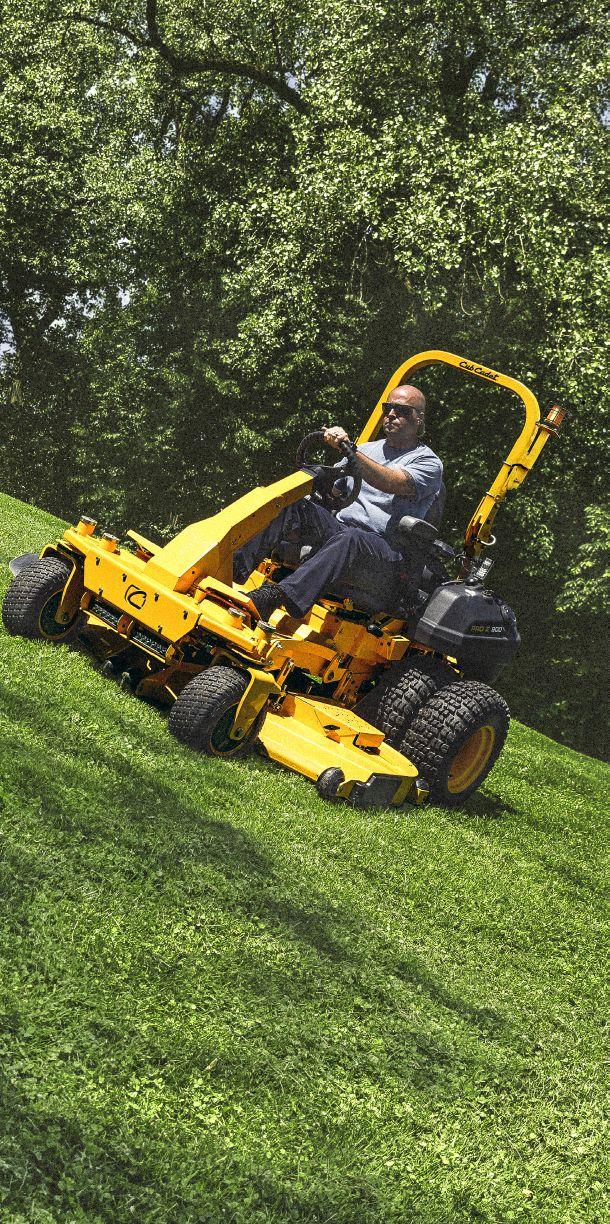
bluegrass and 40 per cent ryegrass.”
Standardizing league specifications was necessary to ensure the bullpen mounds were identical to the field mound and that distances from the mound to home plate and the distances between bases were spot on.
The sand, silt and clay ratios were off the charts, Baron said, noting a high performing infield material was needed. The finishing conditioner product spread atop the skinned infield ensures consistency on the infield’s top layer and absorbs 30-to-
Profitable in Every Season
Experience Year-Round Productivity with the Walker Spring Tine Dethatcher attachment
Spring Tine Dethatcher
Excellent for spring clean-up, the Spring Tine Dethatcher easily clips on the front of 36”, 42”, 48” and 52” Walker decks without fasteners or tools in a quick, easy motion. When used with the Grass Handling System on Models C, D, S and T, lawn thatch and debris are lifted, removed and collected in one pass.
Gauge wheels and hinged frame allow the dethatcher to closely follow terrain, and a lift lever with foot trigger lowers and raises the Dethatcher for easy transport when driving between mowable areas.
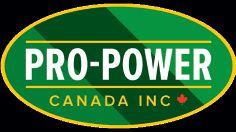
one its weight in water.
Additional sprinkler heads were added in the outfield to increase the efficiency of the ballpark’s irrigation system. The older hydraulic system still works, Baron said, but needs improvement.
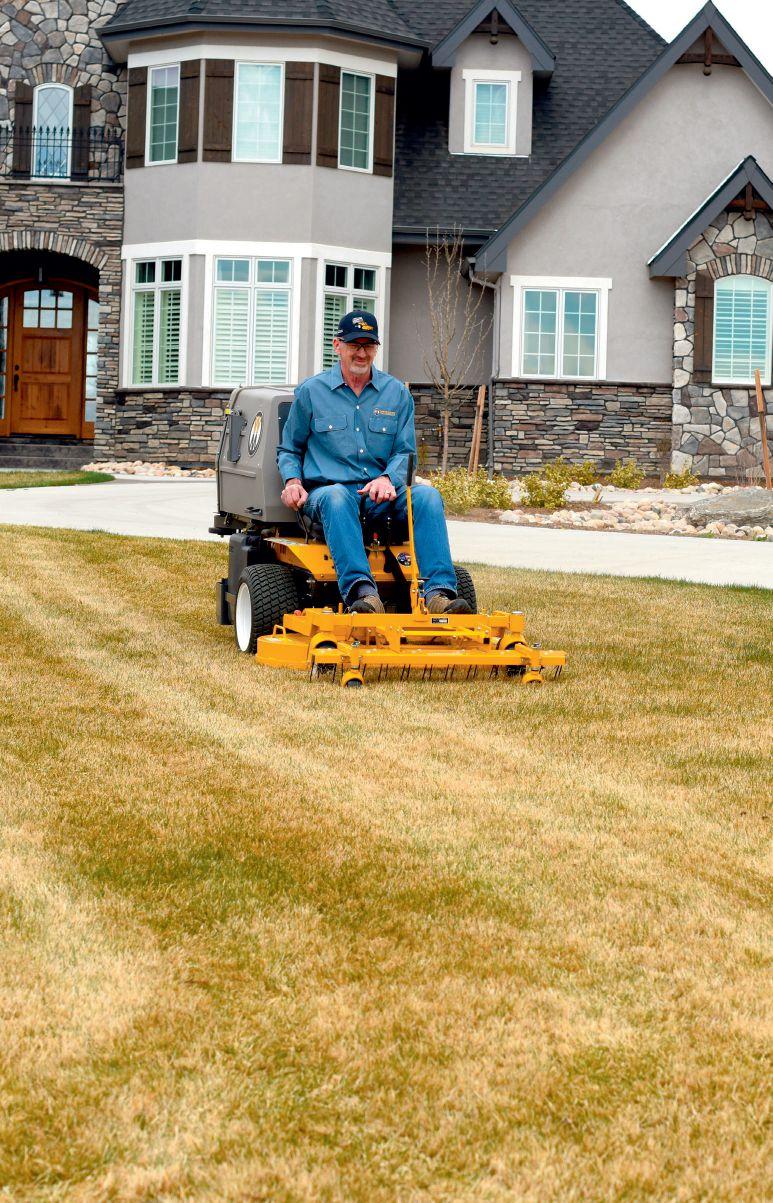
Improved mowing patterns
Another of his goals was to improve mowing patterns and rotating them around. Continuously mowing the same patterns leads to “snaking,” he said, which encourages the ball to follow the patterned grooves because the grass is trained to grow in those directions.
“From a turf health perspective, it’s always good to keep that grass guessing and keep it moving around.”
One of the biggest mistakes a sports turf manager can make in dealing with transition areas is matching the material level with the height of the grass.
“You’re not matching the material level with the height of the grass. You’re matching the material level with the soil level.”
To ensure the material and soil levels match up, Baron said he adopts the “look up” rule. If a player is following a fly ball and he crosses the transition, he shouldn’t feel any difference between the grass and the infield. There should be no lip, and if the fielder is running while looking up, he shouldn’t have to worry about tripping over the edge.
Prior to the stadium’s construction, the outfield area had been a 15-acre swamp and still had a variety of high and low spots when Baron was hired. When the outfield was topdressed, it was dragged using a T-bar that slowly filled in the lower spots. It was finally laser leveled to ensure consistency.
The field renovations began in April of 2017 and continued until June when the season was ready to get underway. A number of challenges were experienced along the way. Getting big equipment into the stadium was difficult because several new buildings had been constructed in the surrounding area since the 2010 Vancouver Olympics, which limited access to the park.
This forced the 600 tons of washed sand March 2020
‘It’s
needed for the stripped infield to be brought in “bucket by bucket” on a skid steer from the parking lot. The job took about three weeks at eight hours a day.
“We got it in, got it level and got it ready for sod.”
The infield was dug to a one-foot depth to get rid of the organic subsoil. The washed sand was mixed with five per cent peat moss. Thick-cut Kentucky bluegrass sod was laid by hand, starting at the perimeter and working inward.
The supplier of the infield material devised a custom blend based on the field’s
sand, silt and clay ratio. It was tilled and laser leveled. Baron said having consistent tilled material helps with water management during weather events. Players are provided with solid footing that feels like corkboard. Their cleats will go into the material and come out cleanly without any chunking from pushing off.
During the laser leveling process, Baron said he aimed for a .5 to one per cent slope toward the outfield.
“You want it as close to level as possible while still having some surface drainage capabilities when you have heavy rains.”
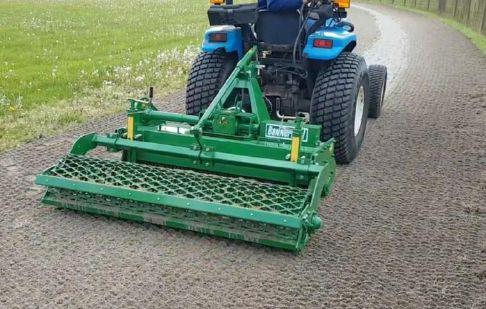
New! Bannerman Model B-IS-F145 Stone & Debris Burrier
• Controls weed infestation in walking paths, warning tracks and baseball infields.
• “One Pass” ground preparation for seeding or sod replacement in goal mouth areas
• Tractor PTO Driven - (30 to 45HP) recommended
• 28 Special Centra Rotating “Hoe” Blades Leveling
• Grader Blade on Screw Jacks
• Rear Adjustable “Net” Roller complete with Soil Scraper and Brush
• “Net” Roller can be offset to work close to fences, walls and curbs
• Working width 57”, Standard 3 Pt Hitch Cat # 1 & #2
Material migration
When maintaining skinned infields, it is important to vary dragging directions to avoid material migration, he said. He likes to alternate among three directions, leaving the field each time in a different location. Material migration into the turf leads to lip formation because the lip is essentially being topdressed with infield material with grass growing through it, “and that’s how you build lips.” He said he’s seen it so bad that it resembles a ski jump.
Baron said a nail board is an essential tool for roughing up clay infields, getting rid of cleat marks and helping to level the infield throughout the season as long as dragging is done in three directions. Following a heavy rain event, a nail board helps to open up pores, allowing better airflow and helping the infield dry up that much faster.


Trilo VCU
The Trilo VCU 200 Verticut unit is specially designed for sports fields, flat areas and parks, and is the solution for all your thatch problems. Features include:
• Removes thatch build-up • Allows increased aeration
• More effective utilization of fertilizer
• Increased water penetration
• Earlier spring green-up • Fall seed bed preparation
• Completely mechanically driven, no hydraulics
• Working width of 78” • Removes thatch down to a depth of 1.5”
• Multi-tipped blades, 3mm thick on 1.25” centres
• Quick depth of cut, adjustable by calibrated screw jacks
• Cable debris scraper on gauge roller
• Requires minimum 20 HP tractor

OWEN SOUND
SCARBOROUGH
SCARBOROUGH
SIMCOE
ST . CATHARINES .
TORONTO
VARS
WAINFLEET
WELLESLEY
FATHER & SONS POWER EQUIPMENT
THE LAWNMOWER HOSPITAL
NIELS & GORD’S REPAIR
4 SEASONS EQUIPMENT ............
TABER SMALL ENGINE
CHILLIWACK OUTDOOR POWER EQUIP
PILON TOOL RENTALS
ISLAND SAW & TURF ...............
B & L SMALL MOTORS LTD...........
HANEY HOME HARDWARE
AJAC’S EQUIPMENT (1982) INC
WALKER’S SAW SHOP LTD
KOOTENAY INDUSTRIAL SUPPLY ......
ACCUSHARP SERVICES
FRASER VALLEY EQUIPMENT LTD
WEST COAST GARDENERS CO-OP
CUMMINGS SMALL ENGINE
R D POND SALES & SERVICE
SMALL ENGINE HOSPITAL ...........
LES FRERES G&G LTEE ..............
HALL BROS ENTERPRISES
CR YARDWORKS & EQUIPMENT
NODDINGS’ SALES AND SERVICE LTD ..
JERRY’S RV TRAILER SALES
MERCER EQUIPMENT INC.
SIMCOE REGION EQUIPMENT CENTRE
BRADFORD RENTAL SALES & SERVICE
B.R. DICKSON EQUIPMENT INC
WPE LANDSCAPE EQUIPMENT ........
OUTDOOR SUPPLIES & EQUIPMENT ....
ZEHR’S SALES AND MANUFACTURING
CURRENT POWER MACHINERY
W.E. ENTERPRISES LTD
WPE LANDSCAPE EQUIPMENT ........
B&T MACFARLANE
KINGWELL LAWN & POWER EQUIP
ALPINE LAWN & GARDEN EQUIPMENT
YORK REGION EQUIPMENT CENTRE ....
WALPOLE LAWN & GARDEN ..........
LARRY’S RENTALL INC
KOOY BROTHERS
M.R. BLAIS SALES & SERVICE INC .....
BEN BERG FARM INDUSTRIAL EQUIP ...
WELLESLEY HOME CENTRE
WICKHAM NURSERYLAND ...........
403-259-4555
780-437-1851
403-328-9178
780-467-1416
403-223-1027
604-792-4410
250-338-5361
250-748-4341
250-376-0033
604-463-4663
250-754-1931
250-753-8309
250-352-5301
604-986-2516
604-590-1433
604-430-4117
204-237-4911
506-472-7663
506-854-2807
506-776-4337
506-839-2442
506-854-0333
902-543-7396
902-681-9501
705-503-3535
705-503-7732
905-775-7101
905-331-5040
905-628-3055
905-578-2411
519-595-7579
905-822-4211
905-629-1424
905-569-2055
613-225-0555
519-376-8706
416-292-8900
416-751 4455
519-426-7589
905984-5522
416-242-3513
613-443-1230
905-899-3405
519-656-2010
306-825-3262
Caution must be exercised when using drag mats, he said, because they flow with the profile and contribute to high spots while pulling material away from low spots. The best way to avoid that from happening, he said, is to use a nail board first and then switch to a rigid drag mat that allows material to be dragged into low spots while shaving off high spots.
Special attention needs to be given to such high-traffic areas as leadoff spots, sliding areas, the pitcher’s mound, home plate and the batter’s box. None of these areas can be allowed to compound and get worse, Baron said.
Managing moisture in the infield is a never-ending task, he added.
“If it gets too dry, the clay will have a tendency to get rock hard and crack. If it’s too wet, it gets mucky and gets a little bit slippery.”
Two types of conditioners are typically used on baseball infields – calcined clay and vitrified clay – but Baron said he prefers calcined clay. The field is flooded and rolled before every home stand, allowing moisture to be trapped deep in the profile. Flooding is done at night to avoid daytime evaporation. The next morning the field can be rolled out to seal in the surface and get water deep into the profile. By not flooding properly prior to a home stand, water reserves are lost in the infield after the first game, he said.
“If you lose those water reserves that quickly, there’s no way you’ll be able to get that moisture level in your infield where it needs to be in order to play safely and have good game play.”
Baron, who did his university internship with Major League Baseball’s Washington Nationals, learned from the head groundskeeper there to aerate as often as possible.
“Especially in sports turf, it’s a big deal because the level of compaction is so high.”
He likes to both pull cores and use solid tines. Frequent aeration improves both drainage and air flow.
Due to the inefficiencies of his irrigation system, Baron has adopted the use of wetting agents to get the most out of the water he puts down. His fertility program includes a once monthly slow-release granular fertilizer to ensure the soil gets the nutrients it needs between applications and twice monthly liquid fertilizer applications that are high in both iron and potassium. The iron helps provide the field with its dark colour while the potassium helps address stress caused by the players.
“The players are always kicking the crap out of the field, and the potassium really helps resist that stress.”
Baron tried growth regulators for the first time in 2019.
“I found huge success using growth regulators in terms of the turf density and how it carpets up, and I can cut it at one inch and it’s really strong.”
He said research is being done to study the mixing of growth regulators with line paint. The theory is that painted lines on sports fields will realize a longer lifespan because they won’t have to be mowed as often.




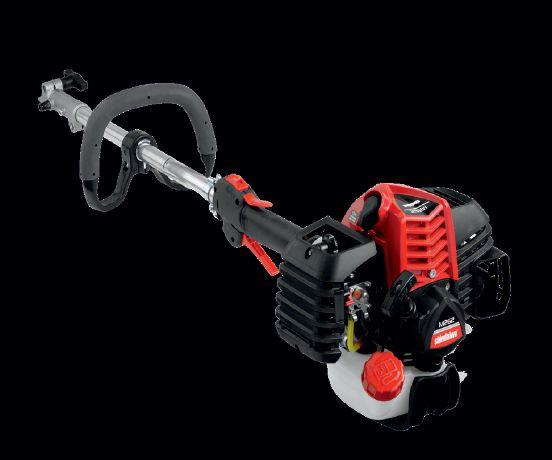


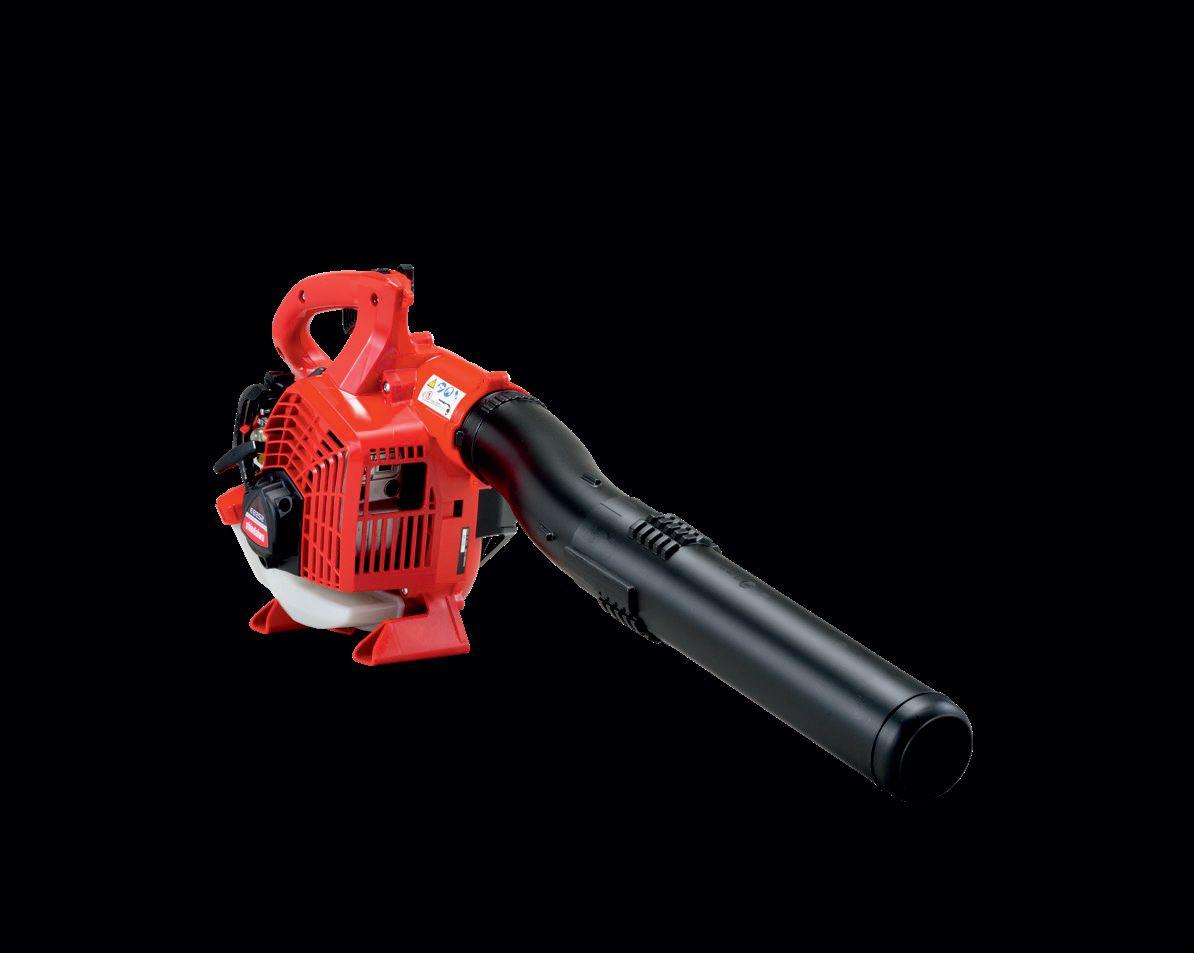




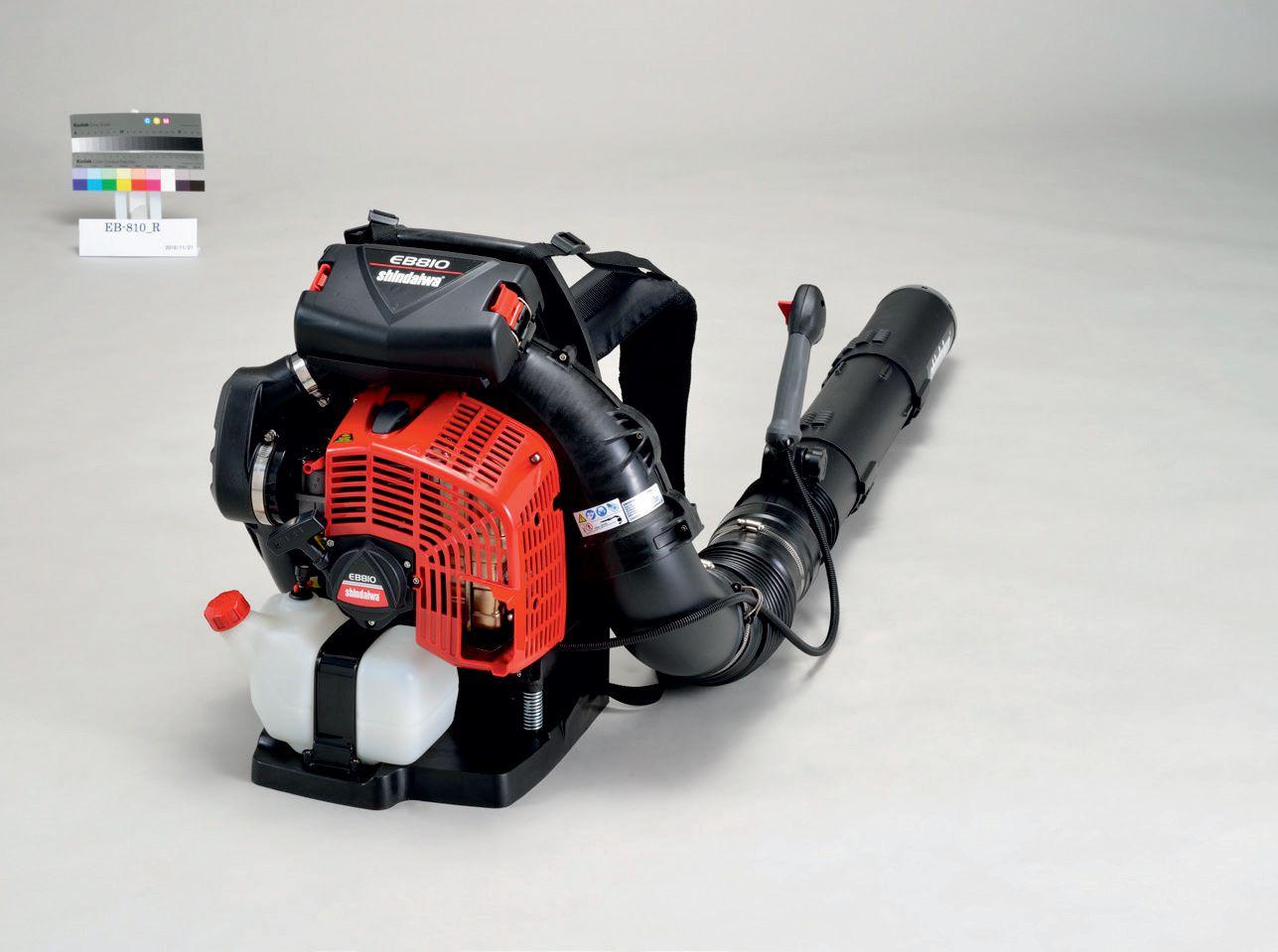
Enhancing business with GPS tracking
Landscape
contractors find driver accountability equals increased productivity
When landscape company and lawn mainten -
ance work crews drive service vehicles from job to job throughout the day, how much may it cost a company for unauthorized long lunches, side trips, and other breaks?
The answer can be surprisingly high. However, improving driver accountability via GPS tracking devices can dramatically improve not only productivity but also profitability.
Greg Hamman, a landscape contractor based in Dallas-Fort Worth, Tex., is owner of Prime Landscape Services. He estimates that if unauthorized employee breaks went unchecked when he first discovered them at his firm years ago, it would cost more than $150,000 annually just on the lawn maintenance side of his business today.
“The crews were telling us they were taking 30-minute lunches, but were really taking hour-long lunches,” Hamman, whose company provides landscape design, lawn maintenance, sprinkler systems, water features, pool and concrete services, said. Currently, the landscape contractor has about 20 lawn maintenance crews serving north Texas, and a company-wide total of about 55 service vehicles.
“We also had guys stopping by their
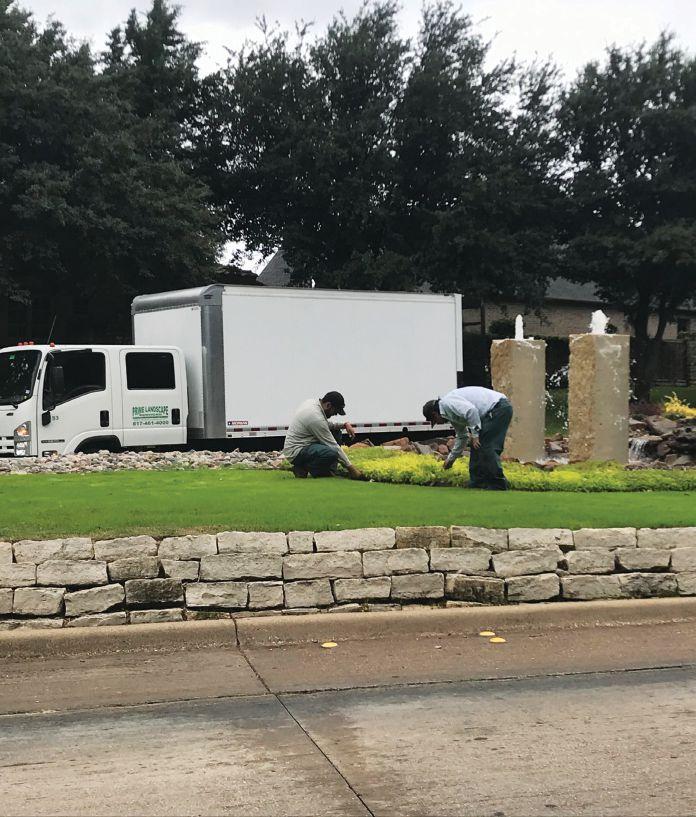
homes in our trucks,” he added. “We had drivers going to stores, or hanging out at a buddy’s house after dropping off the labourers at a job.”
Hamman has turned that all around with the installation of GPS tracking devices on his service vehicles.
“We have really great guys,” he said. “However, I believe in trust but also in
verification. Today, we’re probably realizing a net positive of hundreds of thousands of dollars annually company-wide in greater productivity, safety, and efficiency with the GPS trackers.”
BETTER ACCOUNTABILITY ENHANCES PROFITABILITY
When the landscape company first in -
stalled GPS tracking devices from Advanced Tracking Technologies (ATTI), a Houston, Tex.-based designer and manufacturer of GPS tracking products on a few vehicles about 15 years ago, the technology was not as sophisticated as it is today. However, even back then, the effect was still dramatic.
“Once we put trackers on the trucks and everyone knew it, the shenanigans stopped,” Hamman said. “The system was clear, unbiased, and provided accountability. So, our work crews mostly self corrected and there has been no need to micro manage.”
According to Hamman, the printable report he uses shows every customer address. He matches this with the route list used for billing, and the two should match.
“If we hand our foremen a 20-yard job
list, at the end of the day there should be 20 stops indicated by the tracker,” he said. “It shows everything, including how long they are taking for lunch and every break.”
Recently, Hamman began using an advanced GPS vehicle-mounted tracking device, which he has continued adding to his fleet. He has found a range of valuable uses, including improving driver safety, expedited theft recovery, emergency dispatch, and of course better driver accountability and managerial oversight.
Compared with other GPS tracking devices that may only update every few minutes, the device provides real-time location updates every 10 seconds, as well as location, speed and idle time alerts if something is amiss. This data is transmitted via satellite and cellular
networks to a smartphone or PC on a 24/7 basis. The system has access to nationwide speed limits in its database.
“The GPS tracker can tell you when a truck is speeding, so you can hold the driver accountable and prevent future occurrences,” Hamman said. “You don’t want a truck and a trailer going over 60 miles an hour. That’s a huge liability. If your drivers speed and get in a fatal wreck, the litigation can cost you your business.”
Once, when a $60,000 truck with $30,000 of equipment was stolen, police recovered the truck the same day using the tracker, according to Hamman.
The GPS trackers also enable Prime Landscape Services to quickly respond to anything urgent, which can help build customer loyalty.
“If we get a call to do an emergency
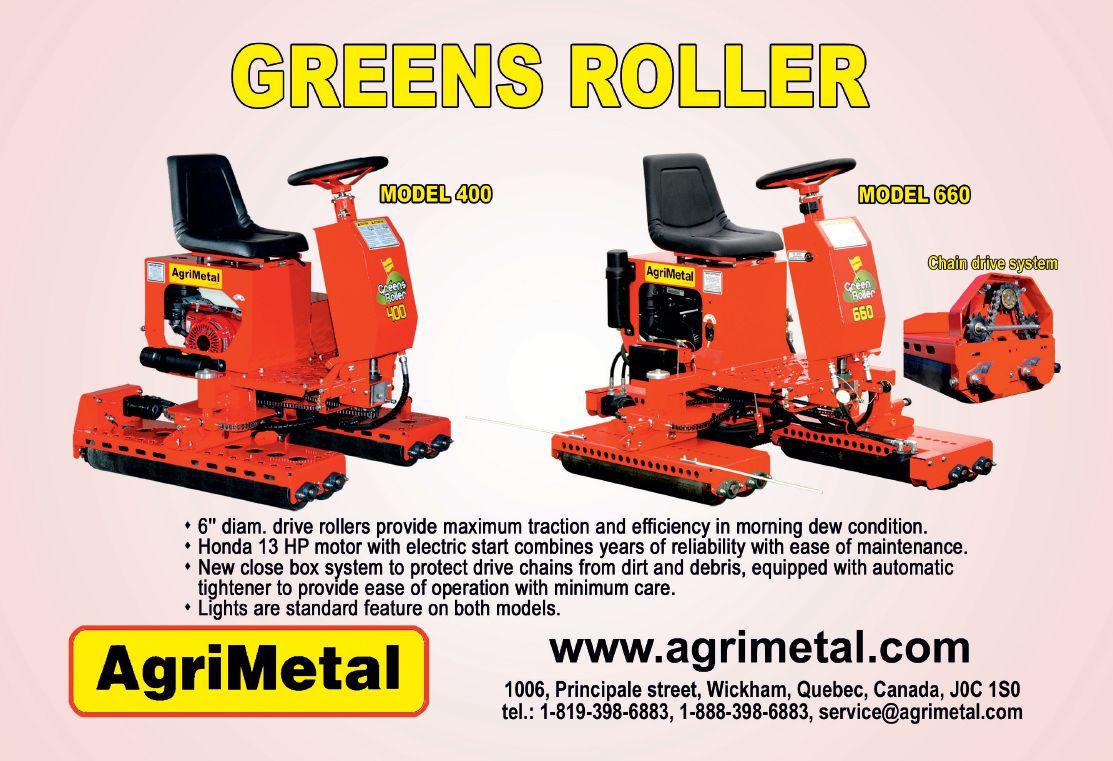
water shutoff in Dallas, for instance, we can look at our trucks on the tracker map, and then immediately dispatch the closest available truck,” he said.
Still, the main benefit of the tracking system is in how it makes employees more accountable to the company and themselves, while streamlining management, Hamman said.
REAL TIME FLEET LOCATION
According to Hamman, via a smartphone app approved by the tracking manufacturer, he can display the real-time location of his entire vehicle fleet on a map, and zoom in on any specific truck. At a glance, he can see if a truck is moving (displays green) or stopped (displays red). If he touches a truck icon, the app will display where the truck has been, where it stopped, and how long it has idled. All this helps with customer support, and with on-the-fly coordination.
“I can pull up my smartphone and see exactly where my trucks are in route, if they’re picking up material, or stuck in traffic,” Hamman said. “So, I can tell a customer almost to the minute how soon a truck will arrive. I can also sit in the office for an extra hour and do billing or call customers while my crew is out getting materials, and then meet them right when they arrive at the job.”
According to Hamman, the systems can also improve drive route efficiency.
“With the GPS tracking system, you can hit a button and print a map of how your foreman drove his
‘With real-time tracking, we know exactly how long the trucks were at each jobsite’
route to a jobsite,” he said. “You can see where he got stuck in traffic, and whether doing far jobs early and close jobs later could minimize any wasted downtime.”
Hamman has also recently discovered how the GPS system can streamline billing.
“Normally, our staff would be in the office until 9 p.m. handling billing after the last trucks came in,” he said. “Now, with real-time tracking, we know exactly how long the trucks were at each jobsite and if they missed any jobs. So, we can start the billing at noon and be almost done by the time the trucks come in.”
In spite of using GPS trackers for more than a decade, Hamman and his staff are still learning new ways to enhance productivity, safety, and profit with the devices, which he notes costs him about $20 a month per vehicle.
“The advanced units are the best yet, and we are really just scratching the surface of what we can do with them,” he said. “Any landscape company not using GPS trackers today is really throwing money out the window and setting themselves up for a disaster.”














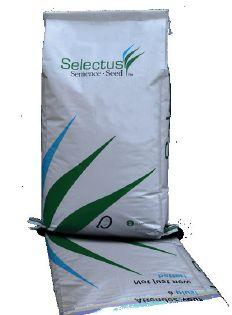

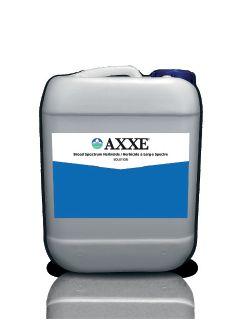





Golf courses should be unique
The game would be boring if all courses looked the same. By
Mike Jiggens
Golf is the only game defined solely by the ground on which it’s played, superintendents attending De -
cember’s 31st annual Ontario Seed Company and Nutrite-sponsored professional turfgrass seminar day were told.
“The more exciting and more interesting that journey is from the first tee to the last green, the more excited people will be to play the game,” golf architect Andrew Green of A.H. Green Design/Green Golf & Turf Inc. said in Waterloo.
The ground can be interesting without the need to make it complicated, he said, adding golf was originally conceived as a game to be played along the ground on the way it was set.
“The old guys (early 20th century architects such as A.W. Tillinghast and Donald Ross) understood how to get the most out of the property. They all utilized the ground in creative ways.”
Older generation golf course designers
were restricted to rudimentary equipment, using the power of horses in many instances. This forced architects to think creatively about using the ground.
“We ended up with really iconic golf experiences that have stood the test of time.”
Once golf moved into the modern era and designers had access to more sophisticated equipment, “we began to overthink what we wanted to do,” leading architects to want to create interesting grounds.
“As architects got busier, a lot of times their production was showing similar things, meaning they were turning out a lot of repetitive ideas.”
Green said this changed the fabric of golf, adding many of the newer courses tend to look the same. Much of the public’s understanding of golf comes from what is seen on television.
He told the superintendents in the audience that their golf courses are completely unique, and there are no other golf
courses “like yours.” Each part of a golf course has a certain lifespan and, like a car that will eventually need new tires, will need upgrades to tees, bunkers, irrigation systems and other areas.
“We need to communicate effectively that these things happen. Understand that at some point you have to reinvest in your facility.”
The length of a golf hole doesn’t determine interest, excitement or level of difficulty, Green said, citing the seventh hole at Pebble Beach as an example.
Bunkers help give golf courses an identity and should be intimidating, architect Andrew Green suggests.
Andrew Green’s philosophy for designing par 3 holes
“That golf hole was a whole other level of unique when it was built. Time has changed it.”
The game would be boring if all golf courses looked the same, he said.
“Being unique and being like yourself is important. A lot of times the people we answer to want us to be like somebody down the road.”
Golf courses that want to “rock” need to break the rules, he said, adding people coming into the game think about it in different ways.
“For me as an architect, this is the most important statement ever written about what I do. My job is designed for us to hold your interest and make you think. I want you to go from the first tee to the last green, and I’m going to give you all kinds of problems and you have to figure out how to solve them.”
Good golf architecture allows everyone to utilize his skills to be successful, and superintendents should be inspired to make their golf courses better, Green said.
When designing par three holes, he said his preference is to create a short hole, one that is mid-short, one that is mid-long and another that is long – giving golfers four distinctly different experiences while playing holes of the same par. He added the game should be enjoyable for those who play it, and finding the right distance is an important consideration, even if it means playing from the forward tees.
Golf course trees
Trees are often part of the golf experience on a course, but the notion of removing them can be a touchy subject among board members. Green said he hopes the previous tendency to overplant trees on
golf courses has come and gone. Sharing with board members the need to cut some trees to reduce the amount of shade being cast on greens is vital, he said, adding it’s a better alternative to reinvesting in greens.
He suggested golfers should look up rather than down the fairway and see the potential problems that exist with trees. The mindset must be geared toward longterm thinking.
“If you’re going to plant a tree, don’t plant it for tomorrow. Plant it for two or three decades from now.”
Bunkers can pose a challenge for superintendents lacking the necessary labour force and materials to maintain them. They can be “demoralizing” for a superintendent and his staff during heavy rain events and are possibly too complicated. Green said there is a balance between
how bunkers are designed and how they are maintained, noting studies continue to show that bunker maintenance is costlier than greens upkeep.
“That makes no sense,” he said, referring to golf courses that spend too much time on bunker maintenance when staffing is lean. Such courses can adjust their maintenance schedules to simply rake out footprints, he suggested.
Bunker styling options
Bunkers need to be strategically positioned and thoughtful to inspire great golf, Green said. Those that aren’t are a waste of resources. He said there are two options for the overall styling of bunkers.
One is to flash the “heck” out of the bunker with sand as high as possible. By utilizing good liners, he said, the sand won’t move.
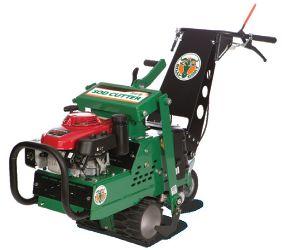
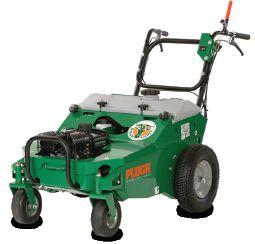


‘Greens should have interesting shapes and provide different hole locations’
“If there is no water going into the sand from outside, it’s like a pile of sand in a parking lot. Any rain that hits it is going to move through and there won’t be enough velocity of water to move the sand off the face. Liners and high sand flashing actually work pretty well and there’s a lot less grass to have to hand water, mow and string trim.”
The cost of liners, however, will be an issue, he added.
Green said another bunker styling option is to adopt a grass face with sand sitting at the bottom, giving courses that can’t afford liners a viable alternative. He said that when water hits the grass, it filters through it and slows down before reaching the sand, giving the sand no place to move.


He said he has tried various types of liners, and all have a place in the market. Key considerations include soil type, sand type, design characteristics, how the bunkers are being maintained and the fabric liner. A properly installed fabric liner that is repaired immediately if it tears or is damaged by an animal “is going to perform pretty darn well” and is a cheaper alternative to a hard liner.
Hard liners, however, are a better option if a golf course is home to burrowing animals.
“Find what works best for you. There is no magic bullet.”
Using high performance sand, such as angular sand, will protect against fried egg and buried lies, but not all golf courses can afford the variety.
“Bunkers help provide an identity to your golf course. I like them to feel intimidating.”
Greens should also add interest to a golf course with unique shapes and contours, Green said. Putting surfaces evolve over time from the original setup. When contouring is restored, hole locations that were lost are found again.
“Greens should have interesting shapes and provide you with different hole locations.”
Greens that are only 10 years old will change over time. Having access to aerial photographs taken 10 to 15 years earlier will show how much they have evolved and will serve as a guide to help restore them to their original setup.
“Be unique with your properties and don’t be like everyone else. Our clients need to be excited and passionate.”
Green has been a senior designer on a number of high profile projects, including such courses as Shinnecock Hills Golf Club on Long Island, N.Y., Pine Valley Golf Club in New Jersey, Oakmont Country Club in Oakmont, Penn. and Merion Golf Club in Ardmore, Penn.
He is based in Forest Hill, Md.
Bunkers need to be strategically positioned and thoughtful to inspire great golf, architect Andrew Greens says.
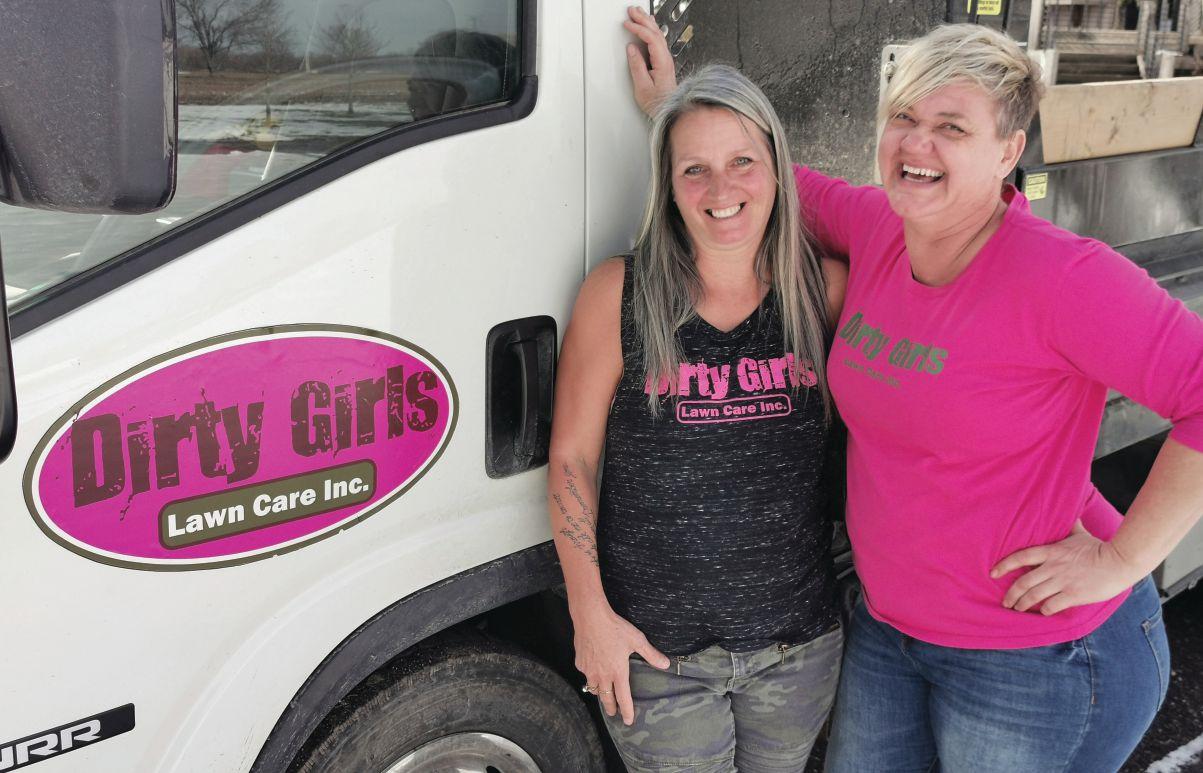
Women in green
Female turf professionals share their stories.
By Mike Jiggens
It’s becoming less of a man’s world in the professional turfgrass industry. Although the industry is still male dominated, more and more women have entered the profession the past number of years, and some have reached its upper echelons as lawn care company owners, landscape contractors or golf course superintendents.
These women have risen through the ranks for a number of reasons – their work ethic, their attention to detail and the pride they take in doing a good job.
Turf & Rec recently interviewed four women of note who have made names for themselves in their respective fields. Two are veterans of the industry, having been working professionally for 20 or more years. Another has experienced a meteoric rise to the top at a relatively young age.
The common thread among all of these women and the reason they entered the turfgrass profession in the first place is a love of the outdoors. The women are sharing their stories with us in a two-part
podcast series that will soon be uploaded to our website (www.turfandrec.com).
For now, however, we’d like to share with our print readers some of the highlights of what they had to say.
Ellie Kop and Teresa Patterson
Twenty years ago, Ellie Kop founded Dirty Girls Lawn Care in London, Ont. Working as a bartender at that time, her passion for gardening inspired her to set out on a new journey. With five residential lawns and two commercial plazas she maintained, the work was only part-time at first. Her fleet of equipment initially consisted of a walk-behind mower, a borrowed trailer and a borrowed truck.
In just a few short years, however, the business began to snowball. What was unique about Dirty Girls was that the business was an all-female operation. Outfitted in neon pink shirts, Kop and her crew attracted plenty of attention, but it was the quality of their work that was noticed most.
Over the past 20 years, the business has grown exponentially to the point where Kop can’t keep up with the telephone inquiries. Several add-on services have been incorporated over the years, including winter snow removal – the one aspect of the business that includes some male workers.
She said her customers tend to be more comfortable with women looking after lawn maintenance work. The 13 seasonal employees on her team look and act professionally while on a job site, with no smoking or swearing permitted.
“We want to set a good example for women,” Kop said.
Teresa Patterson, who has been Kop’s longest-serving employee and is her righthand woman, said customers have told her that women tend to pay closer attention to the finer details of gardening and lawn care. She added that many of Dirty Girls’ female customers live alone and feel safer with a crew of women tending to their maintenance needs.
Teresa Patterson, left, and Ellie Kop of Dirty Girls Lawn Care in London, Ont. Kop founded the all-female lawn care business 20 years ago, and Patterson has been her longest-serving employee at 17 years.
Visit one of these participating Exmark Dealers to learn more about the full line of professional Exmark models.
ALBERTA
CALGARY
CALGARY
DRAYTON VALLEY
EDMONTON
RED DEER
BROTHERS TWO SMALL ENGINES INC
ALBERTA FOREST & GARDEN
HORIZON FOREST AND GARDEN LTD ...
EDGE EQUIPMENT LTD .............. FUTURE AG INC
BRITISH COLUMBIA
ABBOTSFORD .
ALDERGROVE
CAMPBELL RIVER
COURTENAY
KAMLOOPS
KELOWNA
N . VANCOUVER
SURREY
SURREY
VERNON
MANITOBA
HEADINGLY
WINNIPEG
FORESHORE EQUIPMENT & SUPPLY ....
DIAMOND BAR RANCH LTD ..........
C & L SUPPLY (1988) LTD
PILON TOOL RENTALS 1972
B & L SMALL MOTORS LTD
SAVOY EQUIPMENT ................
ARROW EQUIPMENT LTD
ARCOM POWER EQUIPMENT INC
FRASER VALLEY EQUIPMENT LTD
SAVOY EQUIPMENT ................
HEPBURN ENTERPRISES INC
ABC POWER TOOLS ................
NEW BRUNSWICK
IRISHTOWN
ROTHESAY
ONTARIO
ALFRED
BARRIE
BRADFORD
BRAMPTON
BRANTFORD
BURLINGTON
CHATHAM
CREEMORE
DUNDAS
ELMIRA
FERGUS
HAMILTON
KESWICK
LONDON
MISSISSAUGA
NORTH YORK
PETERBOROUGH
PICKERING
SCARBOROUGH
SUDBURY
THAMESFORD
VARS
WATERLOO
WELLESLEY
WINDSOR
SMALL ENGINE HOSPITAL ...........
DC’S SMALL ENGINE EXPRESS
CARRIERE & POIRIER EQUIPMENT
MERCER EQUIPMENT INC
BRADFORD RENTAL SALES & SERVICE
GREEN TRACTORS INC ..............
BOBCAT OF BRANTFORD INC .........
B.R. DICKSON EQUIPMENT INC
CHATHAM OUTDOOR POWER
MAPLE VALLEY SALES & SERVICE INC
WPE LANDSCAPE EQUIPMENT ........
MARTIN’S SMALL ENGINES LTD
A.S.E. EQUIPMENT
OUTDOOR SUPPLIES & EQUIPMENT
YORK REGION EQUIPMENT CENTRE ....
BOBCAT OF LONDON LTD
ZEHR’S SALES & MANUFACTURING
W.E. ENTERPRISES LTD
WPE LANDSCAPE EQUIPMENT ........
LAWN LIFE .......................
PRICELESS PRODUCTS LANDSCAPE
M.C. POWER SPORT
PICKERING MOWER
ALPINE LAWN & GARDEN EQUIPMENT ..
ST. ANDREWS PARTS & POWER
SUDBURY SMALL ENGINE SALES
HURON TRACTOR LTD
M.R. BLAIS SALES & SERVICE INC .....
A TO Z RENTAL CENTRE .............
WELLESLEY HOME CENTRE
CARRIER TRUCK CENTERS INC
403-279-2244
403-248-0878
780-542-4446
780-455-3343
403-343-6101
604-744-0547
604-857-9191
250-287-9231
250-338-5361
250-376-0033
250-868-1010
604-987-9926
604-533-0081
604-590-1433
250-545-0627
204-889-3392
204-224-1760
506-854-2807
506-647-6522
613-679-1103
705-503-3535
905-775-7101
905-846-2511
519-752-7900
905-331-5040
519-354-3990
705-466-3138
905-628-3055
519-669-2884
519-820-9708
905-578-2411
905-478-1553
519-455-4900
519-595-7579
905-629-1424
905-569-2055
519-942-9333
416-410-2158
705-748-5189
905-426-2645
416-292-8900
204-953-0030
705-564-9772
519-285-3845
613-443-1230
519-885-5590
519-656-2010
519-539-0971
“Older ladies don’t want people knowing they live by themselves,” she said.
Kop said that women tend not to let their egos get in the way and have a softer edge to them that customers appreciate.
“You have to like it and do a good job because you’re not going to feel good if you do a job that’s half-assed,” she said. “You have to have a bit of fire in you. While you’re doing it, care about it.”
Patterson, who has been with Dirty Girls the past 17 years, credited Kop’s success to her personality and work ethic, adding women contemplating entering the profession could follow her lead.
“Do what you’re able to do to the best of your ability,” she said. “Be detail orientated and care about what you’re doing. It’s a gratifying job if you love what you’re doing.”
‘We want to set a good example for women’
Finding the right people for the job continues to be Kop’s biggest challenge. Most employees over the years have worked for the business while pursuing a post-secondary education, but then move on to other careers. Lasting friendships have been made among those who move on, she said.
“We mentor them and give them life skills.”
Kop said that what might have been more of a curiosity at first among her peers in the industry has transcended into a business that is being taken seriously by both her competitors and her suppliers. She said this is especially true when purchasing equipment and materials.
When founding Dirty Girls in 2000, “I couldn’t foresee that things would be the way they are today.”
Leasha Schwab
Leasha Schwab’s ascension to the top of the golf industry happened quickly. She became a golf course superintendent at the tender age of 21 and is currently in her third superintendent’s position at Pheasant Run Golf Club in East Gwillimbury, Ont. Two years ago, she was named to Turf & Rec’s inaugural class of the Top 10 Under 40.
Having grown up on a farm, the desire to work outdoors was her lure into the golf profession. Still, her journey into the industry has meant working alongside mostly men.
“All my mentors have been men,” she said. “They support me through and through.”
In spite of the support she has received over the years from her male colleagues and subordinates, it hasn’t completely been a smooth ride, she admitted. A while back, she was forced to go through the Ontario Golf Superintendents Association
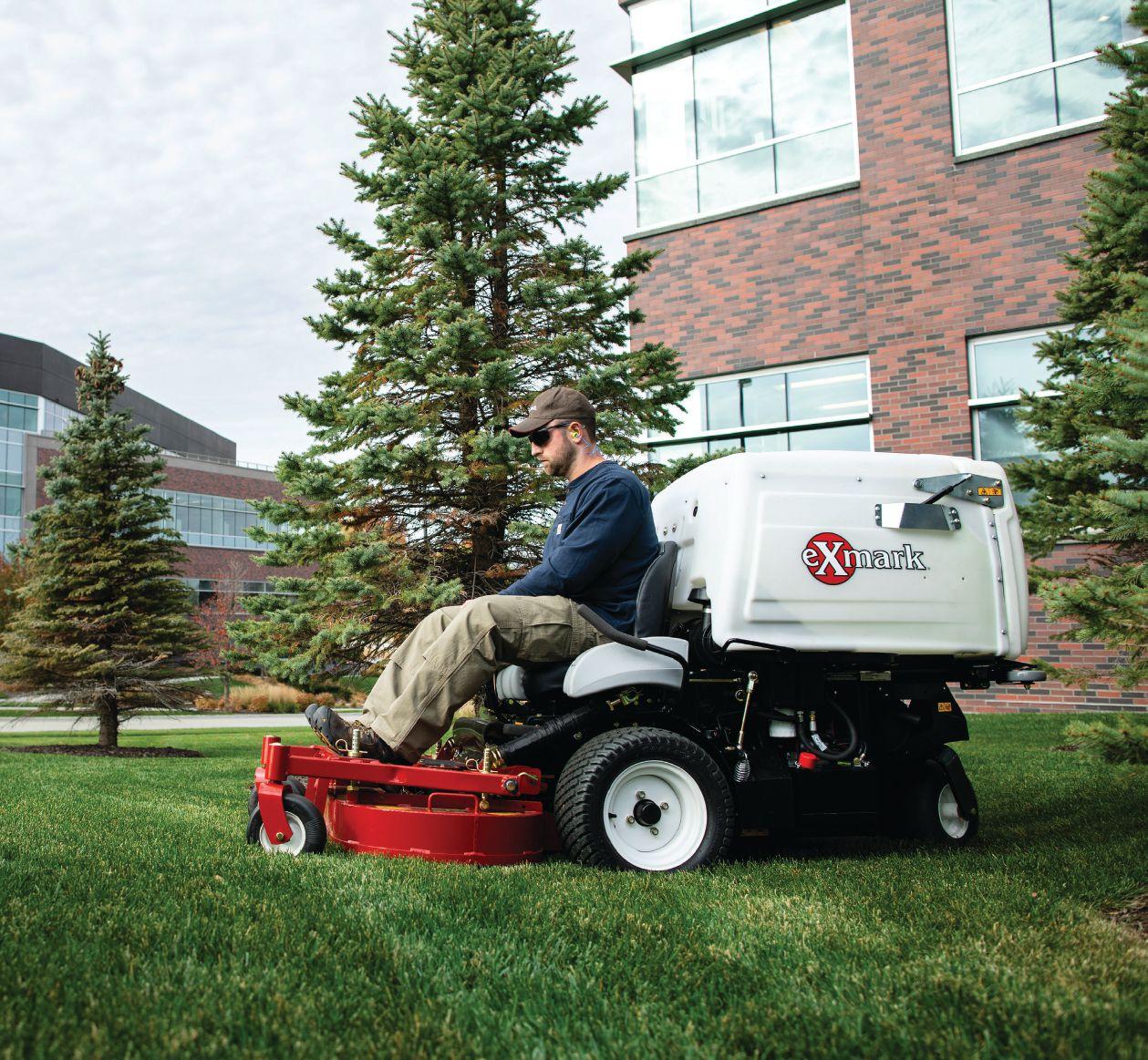
RECEIVE A $1,000 INSTANT REBATE PLUS QUALIFY FOR EXMARK FLEET PROGRAM WHEN YOU PURCHASE A NEW NAVIGATOR
The Navigator is a professional-grade zero-turn mower with the choice of a 42- or 48-inch centerdischarge deck. The deck is designed with two-sided trimming enabling the operator accurately control discharge and keeping flower beds and walkways clipping-free. The large diameter blower helps to generate more airflow for better vacuuming and debris collection. So, you can Navigate a virtually perfect lawn in no time.
to deal with an online harassment situation directed toward her. It marked the first time she felt she had the ability to do something about being harassed and not to simply ignore it.
“I don’t want this in our industry,” Schwab said. “I don’t think young girls should have to deal with this. The situation was quite egregious and, if I had been younger, I probably would have left the industry.”
She said she wondered if similar situations were common among other young women in the industry, but added she was able to deal with the matter in a satisfactory manner because of her network of support.
Schwab said she has maintained an “amazing” relationship with her staff, including some who have followed her from golf course to golf course. She admitted that when she first became a superintendent she thought she might have to act “rough and tumble” before her staff, but treating everyone fairly has been the key to maintaining a positive outlook by everyone and it helps make the golf course better.
“Don’t feel forced into having to be one of the boys,” she suggested. “We really don’t have to do that. It can degrade your leadership if you aren’t being genuine to yourself. That would be a word of caution.”
Three years ago, Schwab became involved in an initiative for women in golf at the Golf Industry Show, put on by the Golf Course Superintendents Association of America. At first a women-only event, the forum opened the door for men to attend in its second year, and this year it attracted a large male following.
She offered a simple bit of advice for women who might consider a career in the professional turf or golf industry.
“Be outspoken with your goals because general-

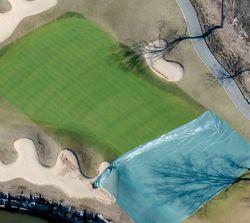
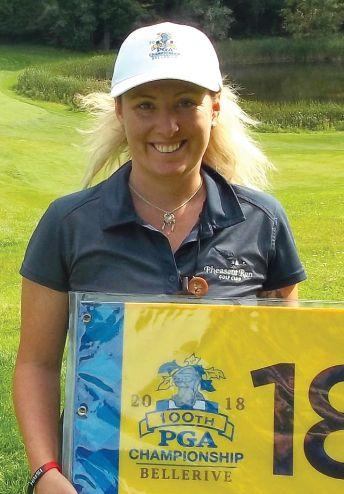
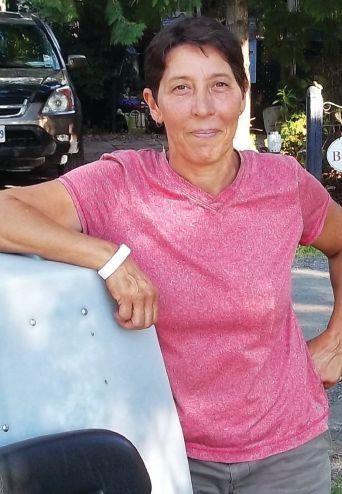
ly your superintendent or people you meet will help you. Women can sometimes just sit back a little bit.”
People who are outspoken tend to want to learn, she said, and others are usually receptive to that.
Melissa Baldelli
Melissa Baldelli was first introduced to the landscaping profession about 23 years ago before launching her own business – Cut and Style by the Lawn Salon – a dozen years ago.
“I really, really found I loved being outside all the time,” she said. “The work was hard, but it was good for me. I lost weight.”
CHECK THIS OUT
Left: Leasha Schwab, superintendent, Pheasant Run Golf Club. Right: Melissa Baldelli, owner, Cut and Style by the Lawn Salon.
Wanting to learn more about landscaping when she first entered the profession, her original employer mentored her about the various aspects of the trade, and she eventually set off on her own to tend to a number of high-end properties in the Mississauga, Ont. area.
Now 58, Baldelli said she still feels good and has no immediate plans to stop. She said the relationships she has developed with her customers account for much of the reason she wishes to continue in the industry.
As a one-person operation, she admitted the physical demands of the job can be trying, but that has helped to make her stronger.
“But then I started getting older and you notice how hard the job actually is, but you can improvise.”
Attracting work was never a problem for Baldelli, who said prospective customers came to her until it reached the point where she had to turn many away.
“You don’t want to take on more than you can do because you want to serve the clients you have the best you can.”
Baldelli has opted to slow down her contracting business and has taken on a part-time landscaping job a little closer to home that has allowed her to cut back on her travel. Additionally, she

works for another contractor during the winter months to help with his snow removal business.
Her customer services with her own company include turf maintenance, pruning, organic fertilizing, gardening and interlock paver repairs. As long as she has the necessary equipment, she said she tries to accommodate whatever needs are requested by her customers.
“Pleasing them is the most important part. When you work on your own, you notice that they do watch you, but if you’re doing what you’re supposed to do there’s no worry.”
Baldelli said she has seen a larger influx of women in the landscaping industry in recent years. Her advice to women interested in entering the profession is to first pass the “guy test.”
This means doing the things a landscaper asks to be done.
“I was asked to do a lot of crazy things when I first started.”
The door is opening wider for more women to enter the profession due to technological advances in landscaping equipment.
Baldelli said today’s tools are superior to the equipment she used many years ago, and are both lighter in weight and more ergonomic. Several years ago, she said she developed carpel tunnel because of heavily vibrating handheld tools.


Abbotsford lawn care business earns top honour
Several honours bestowed upon Grounds Guys franchisee
Chris and Juanita Draaistra, owners of The Grounds Guys of Abbotsford – a Neighbourly company – recently were awarded the franchisee-of-the-year, recruiter-of-the-year, and Top Gun awards from The Grounds Guys corporate office at the annual Neighborly International Conference in San Antonio, Texas.
The franchisee-of-the-year award is the company’s highest. The award is presented to the franchisee recognized for consistently growing through proper training and management of their organization and having had a consistently high level of sales through quality, professional service.
“The Grounds Guys team is thrilled Chris and Juanita won the franchisee-ofthe-year award,” Joshua Sevick, president of The Grounds Guys, said. “They have high standards and achieve a level of excellence that sets the standard for The Grounds Guys franchises.”
The recruiter-of-the-year award is the highest honour that can be bestowed upon a franchisee for efforts in building a multitruck operation. This award is presented to the franchisee demonstrating superior recruiting skills by attracting quality people to the franchise, providing an effective training program for their people, and having created opportunities within the franchise to which people can grow.
The Top Gun Award goes to franchise owners who achieve top sales and reach operation benchmarks. The Top Gun recipients represent the top 10 per cent of The Grounds Guys franchise owners across North America.
“The idea of Top Gun was established by the Navy in the 1960s as a way to give training and credit to elite fighter pilots,” Sevick said. “Taking a page from the Naval Top Gun program, each year we recognize our franchise leaders for their accomplishments and dedication to the trade. It takes dedication, hard work, expertise and commitment to reach the
Top Gun goal, and we are honoured to have these winners on our team.”
“We are honoured to receive these awards,” Chris Draaistra said. “We are committed to working hard every day to provide timely, courteous and professional lawn care and landscape solutions to commercial and residential clients that meet and exceed our customers’ expectations.”
The Grounds Guys, a Neighbourly company, is a full-service grounds care company offering commercial and residential landscape management services. Founded in 1987 under the name Sunshine Grounds Care, The Grounds Guys currently operates more than 200 locations throughout the U.S. and Canada. Acquired by Neighbourly in 2010, The Grounds Guys is part of Neighbourly, a community of home experts, leveraging nearly 3,700 professional home service experts worldwide with a unique direct service function that provides consumers assistance with nearly all aspects of their home care needs.
Chris and Juanita Draaistra, centre, owners of The Grounds Guys in Abbotsford, B.C., join their family in accepting the Neighborly company’s franchisee-ofthe-year award.
New stuff
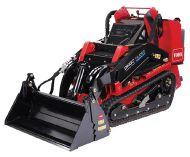
Toro has announced a brand-new attachment offering for the Toro Dingo compact utility loader product line – the versatile four-inone bucket attachment. This high-strength and high-performance attachment can handle a variety of earthmoving tasks without the need to change out Dingo attachments.
The four configurations of the new attachment include:
Standard Bucket — With the jaws completely closed, operators can use this attachment as a standard bucket. Additionally, operators can simply open the Dingo four-in-one bucket jaws to dump the contents into a higher area than a standard bucket can typically reach.
Leveler — Operating with the jaws completely open gives contractors the ability to use the bucket floor’s rear-cutting edge as a leveler. By simply tipping the bucket slightly so that the rear cutting edge of the bucket floor is on the ground and the forward edge is off the ground, operators can put the cutting edge in reverse across the surface of the ground, resulting in a smooth, level surface.
Blade — When utilizing the attachment with the jaws completely open, operators can use the back of the bucket as a blade to push material. Additionally, by partially closing the jaws and using the bottom of the front bucket, operators can push material and grade with the rear blade simultaneously.
Grapple — While using the traction unit’s forward and reverse auxiliary function, the side jaws can be used for picking up material by closing them over objects or materials to be transported.
For more information, visit https:// www.toro.com/en.
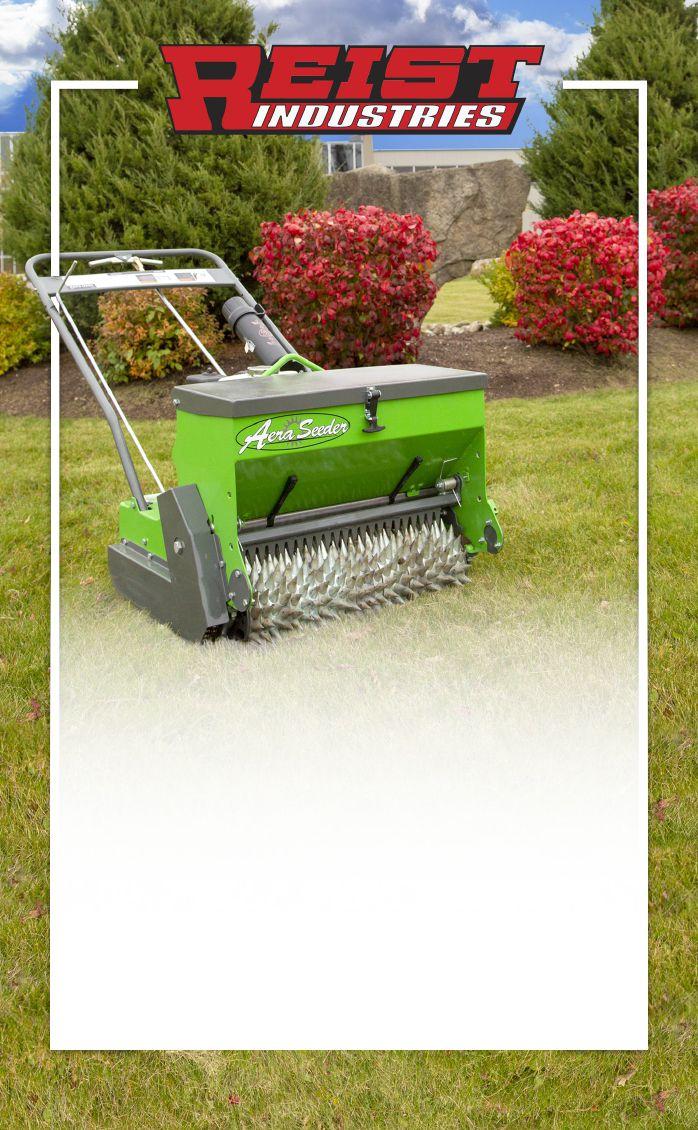
24” SELF PROPELLED AERASEEDER
Multi-spiked roller
850 perforations per square yard
Honda engine with Eaton Hydrostatic Drive
Rear smooth packing roller
Cam-adjusted seed gate
User-friendly controls
Seed calibration tray
Addition of Optional rear multi-spike roller increases to 1700 perforations





Loegering Power Attachments, an ASV Holdings Inc. brand, has introduced the ST Series stabilizing and milling skid-steer and compact track loader attachments to the North American market.

Made up of the ST1000 and ST600, the ST Series attachments are versatile and give contractors in the construction and roadwork industries the ability to complete milling and stabilizing applications with the same tool.
The attachments are built with convenience in mind. The ST Series gives contractors the value of two tools in one, thanks to a unique drum design allowing both milling and stabilizing.
Operators achieve accurate milling to a depth of nine inches and the ability to follow the contour of the pavement independent of the loader, thanks to independent level control on both sides of the attachment.
Contractors achieve optimal mixing of binders into cut pavement as a result of a large mixing chamber, allowing the cut material to expand.
The 39-inch-wide ST1000 is one of the largest compact track loader or skid-steer-mounted milling attachments on the market.
The demanding tool requires a powerful carrier to operate correctly, making it an ideal fit for ASV’s RT-120 Posi-Track loader — a powerful compact track loader.
Loegering Power Attachments also offers the 24-inch-wide ST600 for use on smaller, lower-flow-rate loaders than the RT-120, such as ASV’s RT-75 Posi-Track loader. The attachment is ideal for efficiently completing smaller projects, such as narrow roadways, small parking lots, paved trails and paths.
visit www.loegeringpower.com or www.asvi.com/build.

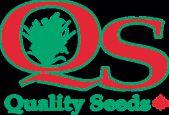
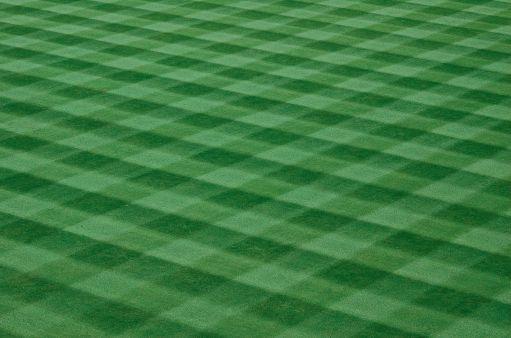
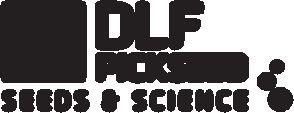




Health & Safety
By the CCOHS
The Canadian Centre for Occupational Health and Safety (CCOHS) promotes the total well being of workers in Canada by providing information, training, education, systems and solutions that support health and safety programs and injury and illness prevention. www.ccohs.ca
Avoid the shock of electrical hazards
Walk on to a worksite and chances are high that you’ll find electricity powering tools and light fixtures, running overhead in power lines, or flowing through underground cables. Electricity is so integral to the day-to-day activities of a workplace that it’s easy to forget that this commonplace utility is also a serious workplace hazard.
It takes very little electrical current to seriously injure or even kill a worker. According to the National Institute for Occupational Safety and Health (NIOSH), direct contact with a circuit that can cause less than one amp of electricity (less than the current through a 100-watt light bulb) to pass through a human body can cause a worker to stop breathing (fibrillation). Direct contact with a live 15-amp circuit, the equivalent to a standard household outlet, can result in death.
In Ontario, from 2008 to 2017, 33 workers died from electrocution (non-intentional


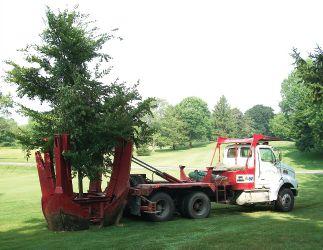

It
death caused by contact with electricity) or by the effects of electrical burns on the job.
ELECTRICITY AT WORK
An electrical hazard is a dangerous condition in which a worker could make electrical contact with energized equipment and sustain an injury from shock and/or from an arc flash burn, thermal burn or blast injury.
Electricity seeks the easiest and shortest paths to the ground – when people or objects come too close to, or touch an electrical wire, they can become part of an electrical circuit. The amount of current that flows through the body is determined by the human body resistance, and the lesser the body resistance, the higher the current that flows through the body, which increases the risk of a fatal electrical shock or severe burns.
The human body can become a good conductor, conducting electrical current from a live wire to the ground, completing a circuit, if the person comes into contact with a live or energized wire. The voltage of the electricity and the available electrical current in regular businesses and homes has enough power to cause death
by electrocution. Even changing a light bulb without unplugging the lamp can be hazardous from coming in contact with the energized or live part of the socket.
INJURIES FROM ELECTRICAL CURRENTS
There are four main types of injuries: electrocution (fatal), electric shock, burns, and falls. These injuries can happen in various ways:
• Direct contact with exposed energized conductors or circuit parts. When electrical current travels through our bodies, it can interfere with the normal electrical signals between the brain and our muscles. The heart may stop beating properly, breathing may stop, or muscles may spasm.
• When the electricity arcs or jumps from an exposed energized conductor or circuit part (for example overhead power lines) through a gas (such as air) to a person who is grounded.
• Thermal burns from heat generated by an electric arc, and flame burns from materials that catch on fire from heating or ignition by electrical currents or an electric arc flash. Contact burns from being shocked can burn internal tissues while leaving only very small injuries on the outside of the skin.
• Muscle contractions, or a startle reaction, can cause a person to fall from a ladder, scaffold or aerial bucket, and suffer serious injuries.
ROLES AND RESPONSIBILITIES
Employers are responsible for protecting workers from electrical hazards. Employers, managers, and supervisors should encourage workers to communicate any questions or concerns they may have about electrical hazards and be familiar with and able to identify electrical hazards to workers at a worksite. When someone is injured in an electrical accident, call your local emergency services right away. Don’t attempt a rescue unless directed by hydro personnel.

INTRODUCING OUR UPGRADED G-SERIES SMALL-FRAME SKID STEERS AND CTLs. With more than a dozen new features and options that deliver more operating capacity, visibility, and convenience. On top of it all, a host of creature comforts in the cab. Visit your dealer and see why everyone loves a good upgrade. SERIOUSLY UP GRADED.



